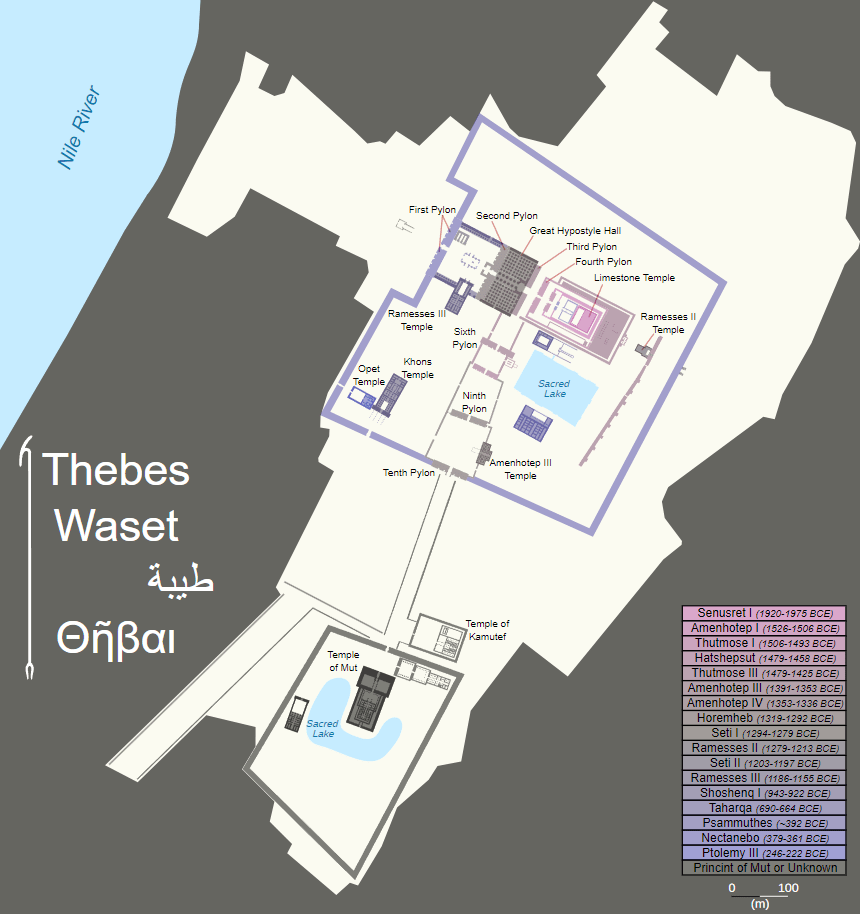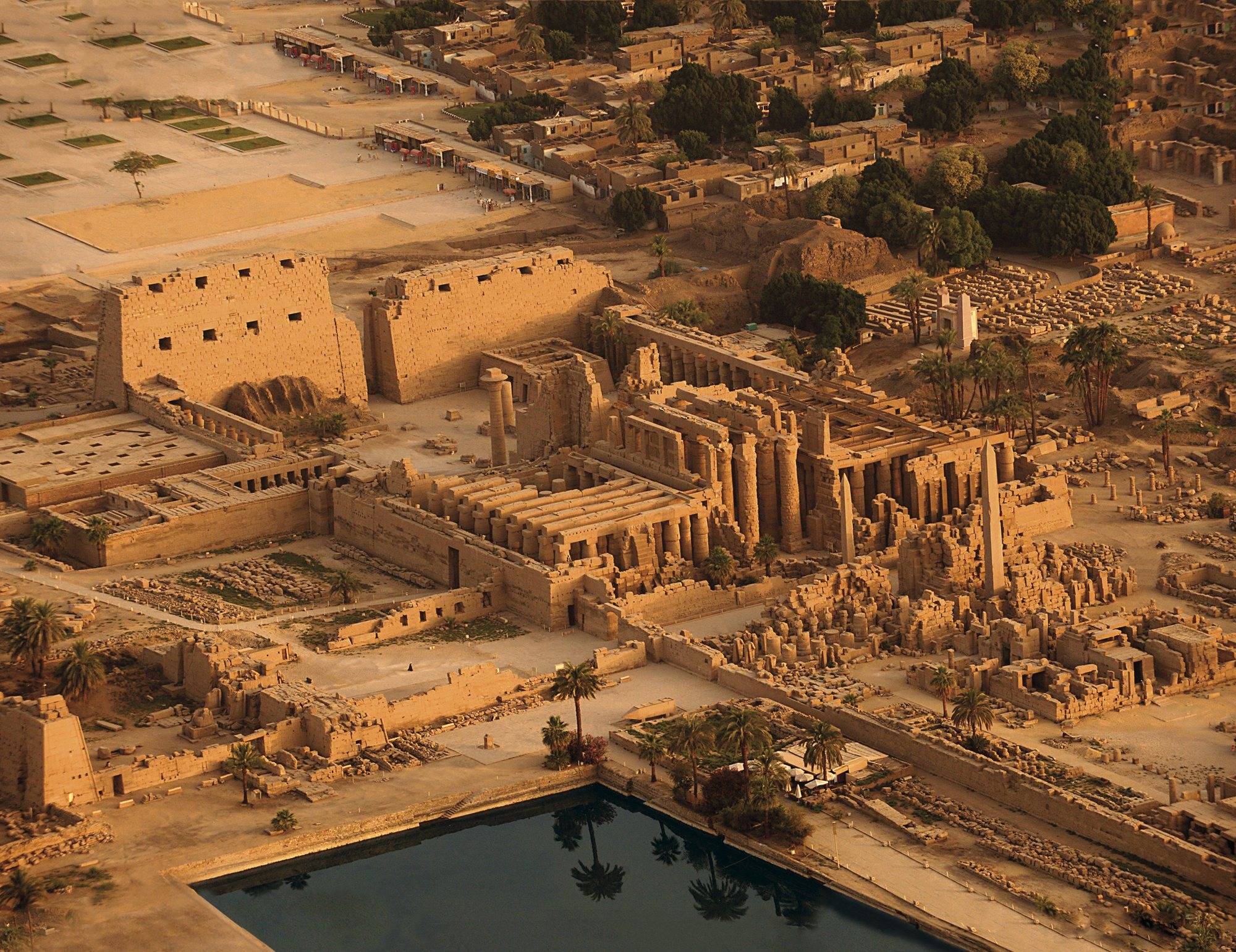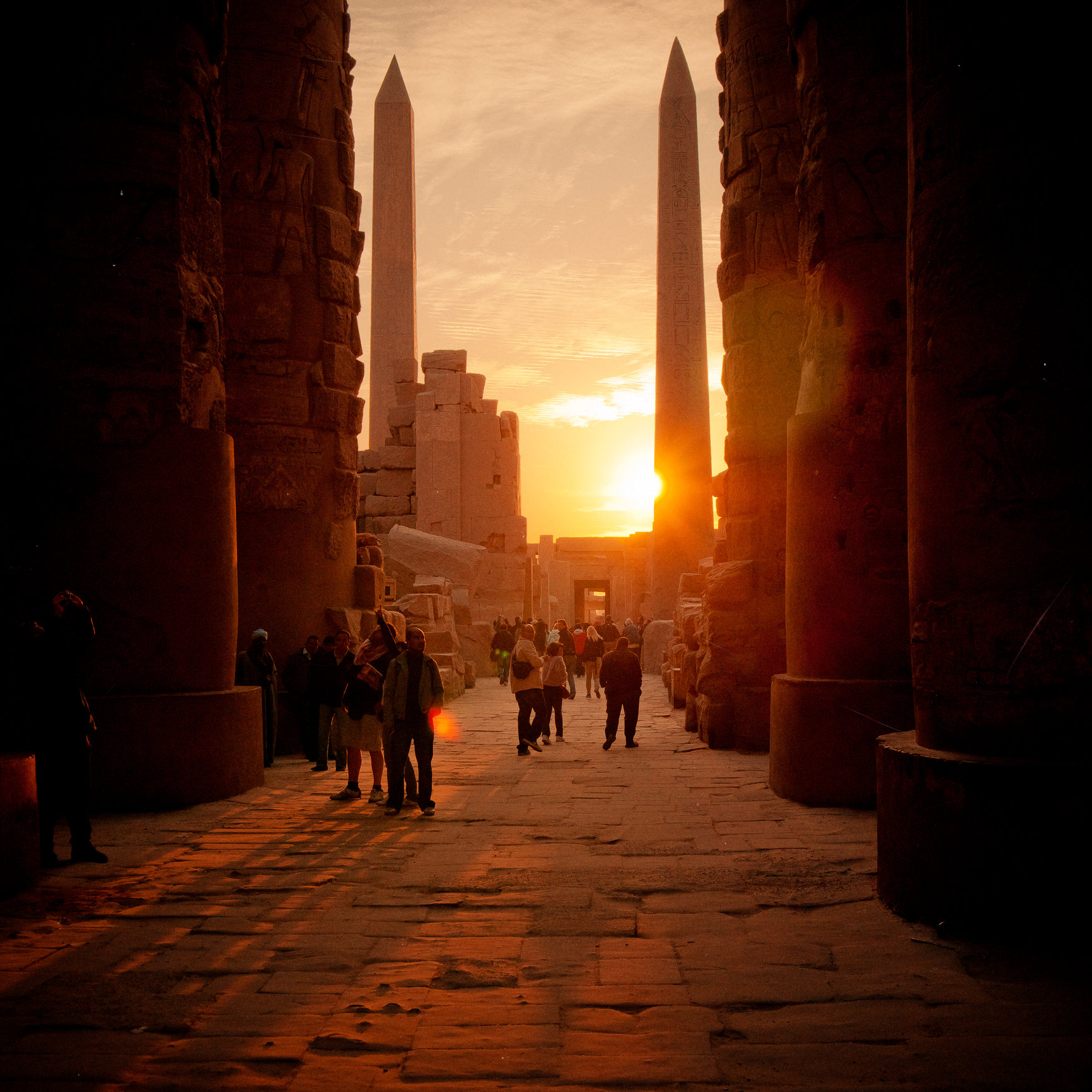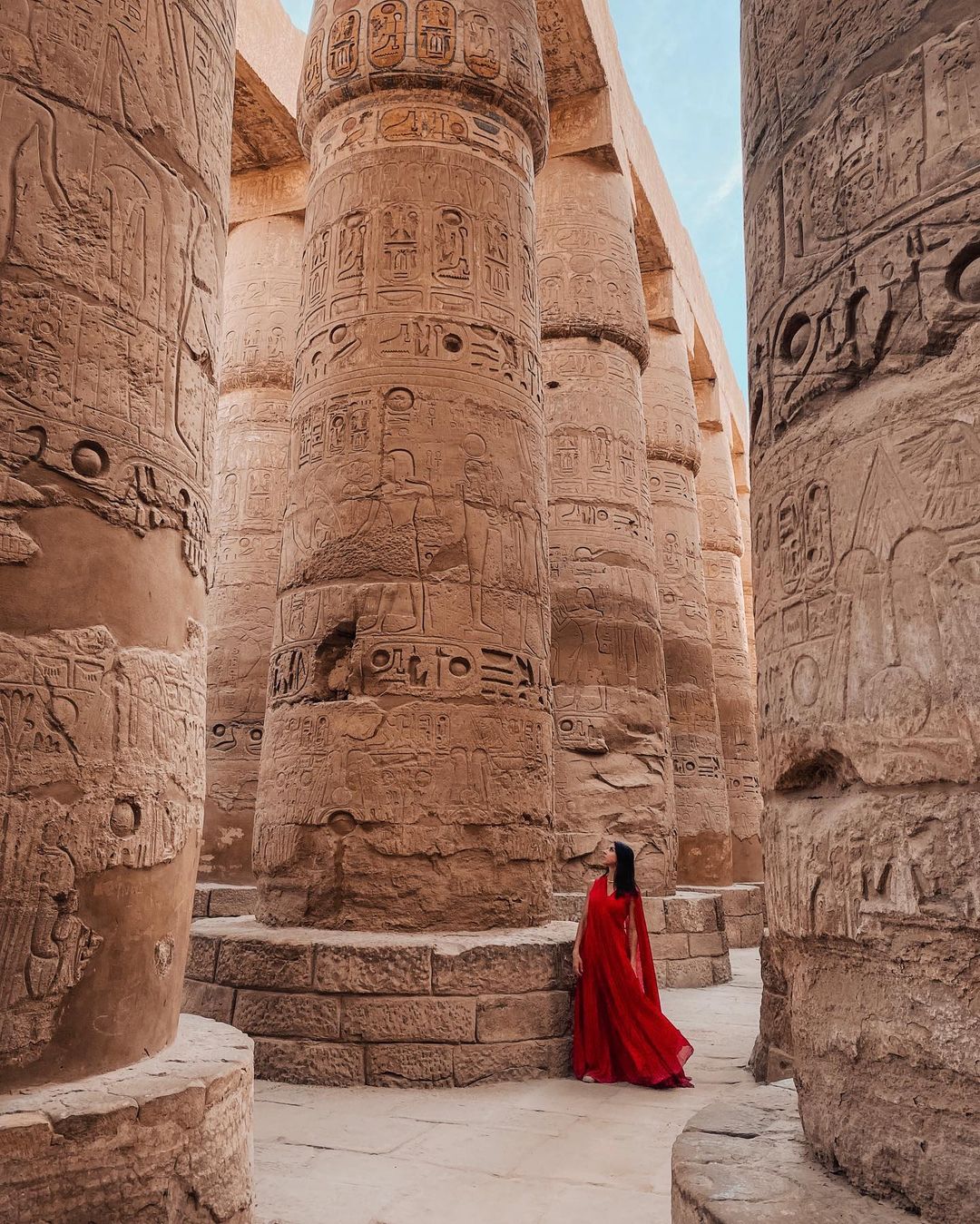Karnak Temple
Complete Travel Guide & History
Imagine entering a place where tall stone columns look like a forest made of stone. These columns have carvings that tell stories from over three thousand years ago. The air feels thick with history, sunlight shines through tall pillars shaped like papyrus plants, and each step echoes in courtyards where priests once chanted and golden parades took place. This place is Karnak Temple. It is not just a building; it is the heart of ancient Thebes and the largest religious complex ever built.
Karnak represents growth and change. Each pharaoh added to it, wanting to make their mark on Egypt’s spiritual center. Today, visitors from all over the world come to see its huge Hypostyle Hall, walk along the Avenue of Sphinxes, and admire obelisks that used to reach the sky. Visiting Karnak is like walking through time, where the past and present meet amazingly.

What Is Karnak Temple?
Karnak Temple is a vast religious complex, the largest ever built in the ancient world. It covers more than 200 acres on the east bank of the Nile in Luxor. This site includes many temples, sanctuaries, pylons, obelisks, and sacred lakes. For over two thousand years, nearly every pharaoh of the New Kingdom and later periods added to its structure, creating a rich architectural record of Egyptian civilization.
At its center, Karnak was dedicated to Amun-Ra, the main god of the New Kingdom. It also honored his wife Mut and their son Khonsu, who together form the Theban Triad. This made Karnak an important spiritual and political center, where pharaohs confirmed their rule through rituals and offerings.
Karnak grew over time. Each ruler aimed to outdo their predecessors by adding massive statues, tall obelisks, and detailed carvings. The result is a stunning mix of styles and buildings that show Egypt’s changing dynasties and ambitions.
Today, Karnak is not just an archaeological site; it is a living timeline. When visitors walk through its grand gates, they can feel the echoes of ancient ceremonies, festivals, and prayers, making it one of the most impressive places to visit in Egypt.
Luxor Tours & Activities
Looking to save some costs on your travel? Why not join a shared group tour to explore Luxor, Egypt? Here are some activities you might be interested in:
Location of Karnak Temple

A Journey Through History
The Karnak Temple has a history that spans over two thousand years, making it one of the most impressive architectural sites in the world. It began during the Middle Kingdom around 2055 BCE when Pharaoh Senusret I built a small shrine for the god Amun. Over the years, later rulers expanded this simple shrine into a grand complex.
During the New Kingdom (1550–1070 BCE), Karnak reached its height. Hatshepsut built tall obelisks, Thutmose III added large halls and entrance gates, and Seti I and Ramses II created the impressive Hypostyle Hall. Later dynasties, including the Ptolemies, continued to enhance the site, while the Romans and early Christians adapted certain areas for their worship.
Each phase of construction shows not only religious devotion but also the ambitions of Egypt’s rulers. Today, Karnak serves as a living history, where every stone tells the story of a civilization’s rise, power, and lasting legacy.

Architectural Highlights You Can’t Miss
Visiting Karnak Temple feels like walking through a stone maze, where each turn shows another piece of amazing ancient engineering. The most famous part is the Great Hypostyle Hall, which has 134 columns shaped like papyrus plants, set in 16 rows. Twelve of these columns stand over 21 meters tall and support stone beams that can weigh up to 70 tons. Picture the hall when it was new: bright, colorful designs on every surface, sunlight coming through windows, and priests chanting beneath the giant columns. Today, you can still see faint hints of red, blue, and yellow paint, giving a glimpse of its former beauty.
Nearby is the Sacred Lake, a large rectangular pool used by priests for ritual washing before ceremonies. It is still filled with water, reflecting the warm colors of the sunset. Many visitors stop here to rest in the shade and enjoy the temple’s peaceful feeling.
The Obelisks of Hatshepsut and Thutmose I are also impressive. Hatshepsut’s obelisk, made from one block of pink granite, was the tallest of its time and still stands tall today. These monuments represent the pharaoh’s special connection to the gods and their lasting legacy.
In the center of the complex is the Precinct of Amun-Ra, the largest and most important area, filled with large gates, temples, and chapels. From here, you can walk along the Avenue of Sphinxes, a ceremonial path that used to have ram-headed sphinxes lining it, connecting Karnak to Luxor Temple. This path has been recently restored, allowing visitors to follow the route of ancient celebrations.
Other interesting sites include the Temple of Khonsu, dedicated to the moon god, the Temple of Ptah, honoring the creator god of Memphis, and the Precinct of Mut, which has its own sacred lake. Together, these landmarks show that Karnak is not just one temple but a bustling city of temples, each filled with history and meaning.

Religious and Cultural Significance
Karnak was a central place for Egyptian worship and politics. The main gods worshipped there were Amun-Ra, Mut, and Khonsu, with Amun-Ra seen as the leader of the gods. Each year, during the Opet Festival, people carried statues of the gods in a procession from Karnak to Luxor Temple. This event symbolized the renewal of divine power and the pharaoh’s right to rule. Pharaohs used Karnak to show their devotion and strengthen their power, often building impressive structures to surpass those of earlier rulers. For the ancient Egyptians, Karnak was more than just a temple; it was the connection between heaven and earth.

Visiting Karnak Temple Today
For modern travelers, Karnak is both accessible and unforgettable. Here’s what you need to know:
- Location: Just 2.5 km north of Luxor Temple, easily reached by taxi, tour bus, or Nile cruise excursion.
- Opening Hours:
summer Working Hours: from 06:00 am to 04:00 pm
Winter Working Hours: from 06:00 am to 04:00 pm
Ramadan Working Hours: from 06:00 am to 04:00 pm
Entrance Fees: Adult EGP 600 – Student EGP 300
Time Needed: At least 2–3 hours, though history enthusiasts could spend half a day exploring.
What to Wear: Light, breathable clothing, a hat, and sunscreen. Comfortable shoes are essential.
Accessibility: The site is well-maintained, with guides available for hire.

Best Time to Visit Karnak Temple
Timing can make or break your experience:
- Early Morning: Cooler temperatures and fewer crowds.
- Late Afternoon: Golden light enhances photography, especially in the Hypostyle Hall.
- Winter (Nov–Feb): The most comfortable season for exploring Luxor.
- Summer (Jun–Aug): Extremely hot; plan visits at dawn or dusk.

Why Karnak Temple Belongs on Every Egypt Itinerary
Karnak Temple is more than just a historic site; it’s a journey through time. From the tall columns of the Hypostyle Hall to the calm waters of the Sacred Lake, each area shares a story of ambition, faith, and connection to the divine. For visitors, it provides both wonder and closeness: the impressive power of the pharaohs and the soft echoes of history carved in stone.
If you plan to visit Egypt, make sure to include Karnak Temple in your Luxor itinerary. It’s a place where the past is not only remembered but also felt, connecting you with the lasting spirit of Thebes.
Got a Question?
F.A.Qs
Construction began around 2055 BCE and continued for over 2,000 years.
Did you know that
By purchasing through our links, you support us at no additional cost.
Thank you for your support. ♥️
